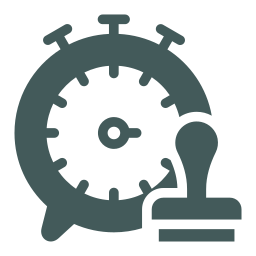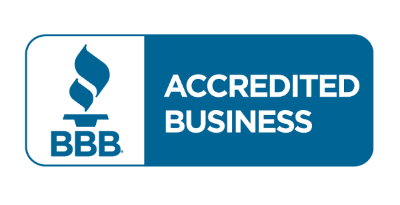
What Beginners Need to Know About Living Gluten-Free
Cooking Disease Nutrition
Changing your diet can be challenging because it usually involves removing certain types of food from your menu. And that is the first point of resistance. But there are significant health benefits to eliminating or minimizing specific foods from your diet-particularly those that contain gluten.

What Beginners Need to Know About Living Gluten-Free
Cooking Disease Nutrition
Changing your diet can be challenging because it usually involves removing certain types of food from your menu. And that is the first point of resistance. But there are significant health benefits to eliminating or minimizing specific foods from your diet-particularly those that contain gluten.
Do you know that over 45 million Americans went on a diet last year?
The main reason behind this was to lose weight. However, more people considered changing eating habits to improve their health.
For example, gluten.
What Is Gluten?
Gluten is a name for proteins found in grains like wheat, barley, triticale, and rye. Gluten occurs naturally in foods, but it can be extracted.
Gluten makes food hold its shape and acts like glue. When you mix it with water, it creates sticky consistency in making bread, pasta, or baking.
Why Go Gluten-Free?
If gluten occurs naturally in certain foods, you may ask why to go gluten-free. The most common reason why you may not eat gluten is that you have an allergic reaction to it. You may suffer from celiac disease.
This condition affects around 1% of the population and it has severe consequences on your health. Your body mistakenly considers gluten as a foreign object, and it wants to remove it. And your body does it by attacking the gluten, ultimately harming your gut wall and your intestines.
Another reason why you may decide to not eat gluten is that you have gluten sensitivity. Because gluten can cause inflammation in your digestive system, you may experience discomfort.
You may feel "heavy" in your body, have stomach pain, or bloating as well as a restriction in your bowel movement.
How to Start Gluten-Free Living?
Starting a gluten-free diet does not need to be hard. Simply follow the steps below to a more healthy living. It may require some learning and persistence to begin with, but it will get easier with time.
1. Gluten or No Gluten
Your first step is to learn what foods you need to avoid and what foods are okay to eat. Keep in mind that gluten occurs naturally in certain grains.
You can find gluten in:
- Wheat
- Barley
- Rye
- Triticale
- Malt
- Brewer's yeast
In addition, any varieties and forms of wheat should be excluded from your diet, too. This includes spelt, durum, kamut, semolina, couscous, bulgur, emmer, farina, farro, and einkorn.
Although you may not eat the grains in their natural form, watch out for products that are made of gluten-containing ingredients. Those will include:
- All wheat-based products such as bread, pasta, and bread crumbs
- Baked goods where wheat flour was added such as cakes, muffins, and pizza base
- Pre-packaged snacks
- Store-bought sauces, marinades and salad dressings
- Flavored beverages and beer
- Other foods like broth
Don't worry, there are plenty of gluten-free foods.
The rule of thumb is that foods in their natural form, unprocessed, and without added gluten-containing flavorings are safe to eat. Therefore vegetables, fruits, dairy products, fish, and meats can be added to a gluten-free diet.
Certain grains and flours are gluten-free naturally and also can be a part of your new diet. Some of the gluten-free grains and flours are rice, corn, quinoa, millet, buckwheat, flax, chia, soy, arrowroot, amaranth, tapioca, potato, cassava, yucca, and coconut and nut flours.
2. Read Labels
The best way to make sure that you follow a healthy diet is to read labels. Understanding what are the main gluten-containing foods and their by-products is a key here.
To make the task easier, look for foods certified as gluten-free. Certification, from an organization such as Gluten-Free Certification Organization (GFCO), is a good indicator that the food is gluten-free.
Some products may not have gluten-free certification, but they may carry a gluten-free label administrated by the FDA.
However, the way a product is manufactured and the list of ingredients changes constantly; therefore, it is best to read the labels every time you shop.
3. Check for Cross-Contamination
Knowing what foods to eat and reading labels will assist further with checking if there is any cross-contamination. A certain product may be gluten-free, but it may have been manufactured in a factory where other non-gluten-free products have also been made.
At home, any cross-contamination can happen if you use the same equipment such as knives, chopping boards, strainers, or toasters for gluten-free and non-gluten-free cooking.
You may need to invest in separate cooking utensils and equipment as well as products. If your cooking oil was used to deep fry foods that contain gluten, there is a risk of cross-contamination.
4. Plan Ahead
Planning ahead about what you will eat can save you a lot of heartaches. If you are going out to a restaurant, you may want to check their menu ahead to know if there are gluten-free options available.
And if you are planning on family dinner, you may want to tell your host in advance that you are on a new healthy diet. Bringing your own gluten-free foods such as pasta, sauce, or bread can help you to enjoy the time together.
5. Have Fun
Regardless of the diet you are on, you still should have some fun. So, you may ask, how do you cook gluten-free foods? It's easy!
The foods you will most likely add to your diet will be whole foods. You will cook more vegetables, raw fish or meat. You can simply add fresh herbs to enhance their flavor.
However, you need to take special care when making gluten-free bread, pasta, or cakes. Anywhere where you will normally add wheat, there will be no "glue" that holds the mixture together. You will need to replace it with another ingredient that will give you that sticky consistency.
Are You Ready for Gluten-Free Living?
You find gluten in certain grains such as wheat, rye, or barley, as well as in many wheat products such as bread, pasta, or cakes. However, it has never been easier to go gluten-free.
To start your gluten-free living, look for foods that contain gluten and remove them from your diet. There are plenty of gluten-free options to choose from such as vegetables, fruit, fish, or meat.
If you are ready to begin a gluten-free diet, we're here to help!

Jay Todtenbier is an original founder of SupplementRelief.com in 2010 and has operated the business ever since. He is also a tennis instructor and gospel musician. Formerly he spent 25 years in business development, technology and marketing with startups and major corporations having gone through the tech boom in Silicon Valley in the 90s. He became passionate about, and began studying and practicing Wellness as a Lifestyle after experiencing chronic, personal health challenges including depression, auto-immune disorders, and being overweight that impacted his ability to live a healthy, vibrant life. Since then, he has been an advocate for healthier living encouraging others to live better through making small, gradual changes to lifestyle behaviors relating to whole-foods nutrition, stress management, reasonable exercise, proper sleep, and the use of targeted, high-quality supplements.
Learn more about Jay Todtenbier.
-
 Discussion Forum
Questions or Feedback?
Discussion Forum
Questions or Feedback?Ask questions. Share your thoughts. Note that we cannot answer questions relating to specific medical conditions - please refer those to your qualified healthcare provider.
Post a new Comment or Reply to an existing one. Help for using the Discussion Forum.
 Discussion Forum Help
Discussion Forum Help
Comments are displayed in order of the last one posted so the most recent one is at the top and the oldest one at the bottom.
Replies within a Comment are displayed in reverse order with the oldest one at the top and the most recent one at the bottom.
Each post identifies
 who made the post and the
who made the post and the  date and time the post was made.
date and time the post was made.Mouse over the icons for tooltips that explain what they mean.

If you see this icon you can attach an Audio file to your post.

If you see this icon you can attach a Document file to your post.

If you see this icon you can attach an Image file to your post.

If you see this icon you can attach a Video file to your post.
You will see the
 Ban icon (Report Post as SPAM) immediately following the Timestamp of the post. Click this icon if you feel strongly that the content posted is not appropriate and should be reviewed by the Forum Moderator. You will be provided with a confirmation dialog to be sure you wish to submit this post for review. If submitted, the Forum Moderator will be notified to review the post and will determine what type of action to take.
Ban icon (Report Post as SPAM) immediately following the Timestamp of the post. Click this icon if you feel strongly that the content posted is not appropriate and should be reviewed by the Forum Moderator. You will be provided with a confirmation dialog to be sure you wish to submit this post for review. If submitted, the Forum Moderator will be notified to review the post and will determine what type of action to take.Click
 in the upper right corner of this Help modal or anywhere on the web page outside of the modal to exit Help.
in the upper right corner of this Help modal or anywhere on the web page outside of the modal to exit Help.
![]() Session Expired from Inactivity
Session Expired from Inactivity
Do you want to?
9618 Jefferson Highway, Suite D-191
Baton Rouge LA 70809-9636
(888) 424-0032 |
support@supplementrelief.com
* Disclaimer: This page is available exclusively for SupplementRelief.com clients. None of the information on this website is intended to replace your relationship with your healthcare provider(s). Nothing should be considered medical advice. The information, knowledge, and experience shared on this website are the opinions of SupplementRelief.com. This site and its content are intended to enhance your knowledge base as YOU MAKE YOUR OWN HEALTHCARE DECISIONS in partnership with your qualified health professional.
* These statements have not been evaluated by the Food and Drug Administration. These products and services are not intended to diagnose, treat, cure, or prevent disease.
* There is NO GUARANTEE OF SPECIFIC RESULTS for the products or services offered, and the RESULTS CAN VARY for each individual. Any results claimed by our customers are based on individual experiences that are unique and cannot be guaranteed.
FirstFitness Nutrition and NuMedica may be promoted and sold on the internet ONLY by Authorized Resellers who have been approved by and have registered their website domain with these companies. They strictly prohibit, and actively monitor, the UNAUTHORIZED SALE or RESALE of their products in ALL online public shopping portals including Amazon, eBay, and others and into other countries. All products purchased in SupplementRelief.com are for PERSONAL USE ONLY and CANNOT BE RESOLD to others. Please report violations of Reseller Policy directly to FirstFitness Nutrition at 800.621.4348 and to NuMedica at 800.869.8100.
The content and photographs on this website are copyrighted or Licensed Material and may not be downloaded for other than personal use. Republication, retransmission, reproduction, or any other use of the content or photographs is prohibited. ©2010-2024 SupplementRelief.com.
Are you sure you want to remove this item?

